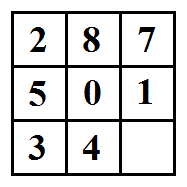Sunday, March 31, 2013
Baker, Principles of Geometry, Vol. IV (1925), Title:

Baker, Principles of Geometry, Vol. IV (1925), Frontispiece:

Baker's Vol. IV frontispiece shows "The Figure of fifteen lines
and fifteen points, in space of four dimensions."
Another such figure in a vector space of four dimensions
over the two-element Galois field GF(2):

(Some background grid parts were blanked by an image resizing process.)
Here the "lines" are actually planes in the vector 4-space over GF(2),
but as planes through the origin in that space, they are projective lines .
For some background, see today's previous post and Inscapes.
Update of 9:15 PM March 31—
The following figure relates the above finite-geometry
inscape incidences to those in Baker's frontispiece. Both the inscape
version and that of Baker depict a Cremona-Richmond configuration.

Comments Off on For Baker

A related image search:

Note particularly the following image:

This is from Inscapes.
Comments Off on For Pascal
Comments Off on Plan 9 Sermon
Saturday, March 30, 2013
An earlier (noon) version of this post showed a photo of a
heartbreakingly beautiful young woman I encountered on
the Web today by chance. Perhaps it is best if she remains
anonymous here.
A detail taken today from her Facebook page:

Location of a nightclub in Bucharest
Related material: Shining Forth by myself and Malcolm Lowry,
and Lucifer by Mihai Eminescu.
See also this journal "about 3 weeks ago."
Comments Off on Bright Star
(Continued)
Harrowing of Hell (Catholic Encyclopedia )
"This is the Old English and Middle English term
for the triumphant descent of Christ into hell (or Hades)
between the time of His Crucifixion and His Resurrection,
when, according to Christian belief, He brought salvation
to the souls held captive there since the beginning of the world."
Through the Blackboard (Feb. 25, 2010)—

See also The Dreaming Jewels and Colorful Tale.
Comments Off on Blackboard Jungle
Comments Off on Realm of the Mothers
Friday, March 29, 2013
Ape to Affleck:

Score by Boston Pops.
Backstory credit— Boston Moms:

Comments Off on Where Credit Is Due
In Memoriam
"In the late ’60s, Williams became a friend and confidant
of science fiction writer Philip K. Dick and wrote about
the iconoclastic author in Rolling Stone in 1974.
Williams eventually completed a biography on Dick
and became his literary executor after the writer’s death
in 1982. He also edited The Complete Stories of
Theodore Sturgeon, Vol. I-XII ."
— Yesterday in the Hollywood Reporter —
Pioneering Rock Journalist Paul S. Williams Dies at 64
4:06 PM PDT 3/28/2013 by Mitch Myers
See also Crawdaddy Story and The Dreaming Jewels
in this journal.
Related reading: Yesterday's noon post and Puzzles.
Update of 8:20 AM Good Friday, 2013:

Comments Off on The Dreaming Jewels (continued)
Thursday, March 28, 2013
For some images related to this rather biblical topic,
see Hillman + Dream in this journal.
“She was dazzled by light and shade, by the confusing
duplication of reflections and of frames. All coming from
too many directions for the mind to take account of.
The various images bounced against each other
until she felt a desperate vertigo….”
— Cold Mountain
Summary image:

“… Margaret Murry, wrapped in an old patchwork quilt, sat on the foot of her bed….”
— A Wrinkle in Time
Comments Off on Woman at the Well
The title is from a New York Times article
by Roberta Smith on the Barnes collection
(see previous post):
“Nearly every room is an exhibition
unto itself— a kind of art wunderkammer,
or cabinet of curiosities….”
Another sort of Wunderkammer:
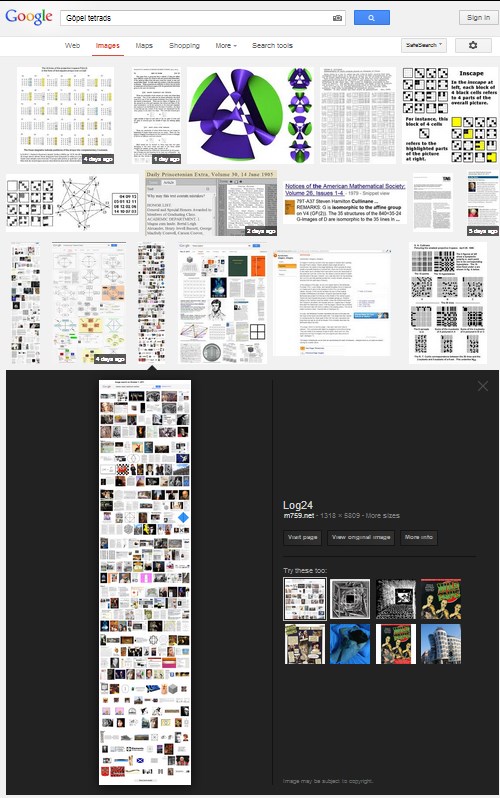
Shown above is a Google image search today for Göpel tetrads .
The selected detail is an Oct. 7, 2011, image search
for claves regni caelorum escher (2 MB).
Comments Off on Wunderkammer
Wednesday, March 27, 2013
Randy Kennedy in tomorrow's print edition
of The New York Times—
Art collector Albert C. Barnes "viewed his foundation
less as a museum than as a school."
Roberta Smith in the New York Times
print edition of May 18, 2012, on
art arrangements by Albert C. Barnes—
"Barnes’s arrangements are as eye-opening,
intoxicating and, at times, maddening as ever, maybe more so.
They mix major and minor in relentlessly symmetrical patchworks
that argue at once for the idea of artistic genius and the
pervasiveness of talent. Nearly every room is an exhibition
unto itself— a kind of art wunderkammer, or cabinet of curiosities…."
This journal at noon on the same day, May 18, 2012—
Balakrishnan's Banners

See also Brightness at Noon from March 25.
Comments Off on The Barnes School
Comments Off on Blockheads
Comments Off on Easter Egg
Tuesday, March 26, 2013
(Continued)
"It should be emphasized that block models are physical models, the elements of which can be physically manipulated. Their manipulation differs in obvious and fundamental ways from the manipulation of symbols in formal axiomatic systems and in mathematics. For example the transformations described above, in which two linear arrays are joined together to form one array, or a rectangle of blocks is re-assembled into a linear array, are physical transformations not symbolic transformations. …"
— Storrs McCall, Department of Philosophy, McGill University, "The Consistency of Arithmetic"
"It should be emphasized…."
OK:

Storrs McCall at a 2008 philosophy conference .
His blocks talk was at 2:50 PM July 21, 2008.
See also this journal at noon that same day:
Froebel's Third Gift and the Eightfold Cube

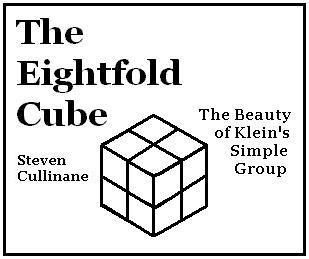
Comments Off on Blockheads

"… the primal ground of this 'one' is 'nothing.'
The elucidation of the generative matrix of the
myth-work is thus completed…." — Jadran Mimica
Related material— The Nothing That Is.
Comments Off on Nothing Revisited
See Lines of Symbols in this journal.
Comments Off on Raiders of the Lost Symbols
Monday, March 25, 2013
Today's New York Times :
"… potential recruits with the right skills
have too often been heading for business,
and those who do choose government work
often go to the National Security Agency…."
Review: Einsatz in this journal—

The German title of "The Recruit" (released Jan. 31, 2003)
is "Der Einsatz." Its MacGuffin is "'Ice 9."
Comments Off on Einsatz für Pessach
The two symbols on the monolith from yesterday —

— may, if one likes, be interpreted as standing for
Damnation Morning and for the Windmill of Time
(alternately, as motifs for a ukara cloth).
The above explanation may help those confused by
knight's-move discourse like that described by
Jemima in The Eiger Sanction .
Comments Off on Brightness at Noon
Monolith for Maggie, continued from yesterday
"The young woman counted—
'Otu, abua, ato, ano, ise, isii, asaa'—
using what remained to her of
the secret language…."
— Opening sentence of the prologue to The Choir Boats,
a 2009 novel by Daniel A. Rabuzzi
The piano link in today's previous post suggests a review
of a post from Feb. 11, 2008. That post suggests in turn
a passage from the Trevanian classic The Eiger Sanction
that says, in part…
"Often it was unnecessary to finish a sentence…."
Comments Off on Art Wars:
(Damnation Morning, continued)
For the late, great Bebo Valdés, who
reportedly died on Friday in Stockholm:

"Mr. Valdés never returned to Cuba. He played piano
in Stockholm hotel lounges for more than three decades."
— Ben Ratliff in this morning's New York Times
"Heaven for climate, Hell for company."
Comments Off on The Dante Prize
Sunday, March 24, 2013

… And for Deborah Mills
Related material: The Cloth.
Comments Off on Monolith for Maggie…
Saturday, March 23, 2013
Quoted in the March 13 post Blackboard Jungle:
"Every morning you take your machete into the jungle
and explore and make observations, and every day
you fall more in love with the richness and splendor
of the place."
— Paul Lockhart, A Mathematician's Lament
More from Lockhart's jungle—
|
Mathematical objects, even if initially inspired by some aspect of reality (e.g., piles of rocks, the disc of the moon), are still nothing more than figments of our imagination.
Not only that, but they are created by us and are endowed by us with certain characteristics; that is, they are what we ask them to be….
… in Mathematical Reality, because it is an imaginary place, I actually can have pretty much whatever I want….
The point is that there is no reality to any of this, so there are no rules or restrictions other than the ones we care to impose…. Make up anything you want, so long as it isn’t boring. Of course this is a matter of taste, and tastes change and evolve. Welcome to art history!
— Lockhart, Paul (2009-04-01). A Mathematician's Lament: How School Cheats Us Out of Our Most Fascinating and Imaginative Art Form (pp. 100-104). Bellevue Literary Press. Kindle Edition.
|
Related material in this journal: Bellevue and Wechsler.
See also Gombrich in this journal and in the following:

Related material (Click for some background.) —

Comments Off on Art History
Friday, March 22, 2013
“Upon the death of the owner, the cloth
may be used to construct a symbolic
Ekpe house (the spirit meeting place)
for the funeral.”
— Lowe Art Museum, University of Miami
“I cannot yet find meaning in this story.”
— Arrow of God (1964)
Comments Off on The Cloth
Thursday, March 21, 2013
An update to Rosenhain and Göpel Tetrads in PG(3,2)
supplies some background from
Notes on Groups and Geometry, 1978-1986,
and from a 2002 AMS Transactions paper.

Comments Off on Geometry of Göpel Tetrads (continued)
Wednesday, March 20, 2013
The title refers to the post of Monday,
March 18, 2013:
"I mean, where's it going to end?"
— Rosencrantz in The Gospel
According to Tom Stoppard
A tentative answer:
"Never done."
Comments Off on Sequel to Rosencrantz
Tuesday, March 19, 2013
Angels & Demons meet Hudson Hawk
Dan Brown's four-elements diamond in Angels & Demons :

The Leonardo Crystal from Hudson Hawk :

Hudson:

Mathematics may be used to relate (very loosely)
Dan Brown's fanciful diamond figure to the fanciful
Leonardo Crystal from Hudson Hawk …
"Giving himself a head rub, Hawk bears down on
the three oddly malleable objects. He TANGLES
and BENDS and with a loud SNAP, puts them together,
forming the Crystal from the opening scene."
— A screenplay of Hudson Hawk
Happy birthday to Bruce Willis.
Comments Off on Mathematics and Narrative (continued)
Monday, March 18, 2013
For Rosenhain and Göpel
|
From Tom Stoppard's play "Rosencrantz and Guildenstern Are Dead"
GUIL: Yes, one must think of the future.
ROS: It's the normal thing.
GUIL: To have one. One is, after all, having it all the time now… and now… and now…
ROS: It could go on for ever. Well, not for ever, I suppose. (Pause.) Do you ever think of yourself as actually dead, lying in a box with a lid on it?
GUIL: No.
ROS: Nor do I, really… It's silly to be depressed by it. I mean one thinks of it like being alive in a box, one keeps forgetting to take into account the fact that one is dead… which should make all the difference… shouldn't it? I mean, you'd never know you were in a box, would you? It would be just like being asleep in a box. Not that I'd like to sleep in a box, mind you, not without any air— you'd wake up dead, for a start, and then where would you be? Apart from inside a box. That's the bit I don't like, frankly. That's why I don't think of it.
(GUIL stirs restlessly, pulling his cloak round him.)
Because you'd be helpless, wouldn't you? Stuffed in a box like that, I mean you'd be in there for ever. Even taking into account the fact that you're dead, it isn't a pleasant thought. Especially if you're dead, really… ask yourself, if I asked you straight off— I'm going to stuff you in this box now, would you rather be alive or dead? Naturally, you'd prefer to be alive. Life in a box is better than no life at all. I expect. You'd have a chance at least. You could lie there thinking well, at least I'm not dead! In a minute someone's going to bang on the lid and tell me to come out. (Banging the floor with his fists.) "Hey you, whatsyername! Come out of there!"
GUIL (jumps up savagely) : You don't have to flog it to death!
(Pause.)
ROS: I wouldn't think about it, if I were you. You'd only get depressed. (Pause.) Eternity is a terrible thought. I mean, where's it going to end? (Pause, then brightly.) Two early Christians chanced to meet in Heaven. "Saul of Tarsus yet!" cried one. "What are you doing here?!"… "Tarsus-Schmarsus," replied the other, "I'm Paul already." (He stands up restlessly and flaps his arms.) They don't care. We count for nothing. We could remain silent till we're green in the face, they wouldn't come.
|
Related material: Quotes from H. F. Baker in posts from March 2011—
A Many-Sided Theory and Remarks on Reality.
Comments Off on Back to the Present: The Sequel
Sunday, March 17, 2013
The previous post discussed some tesseract–
related mathematics from 1905.
Returning to the present, here is some arXiv activity
in the same area from March 11, 12, and 13, 2013.
Comments Off on Back to the Present
Saturday, March 16, 2013
Continues.
From the prologue to the new Joyce Carol Oates
novel Accursed—
"This journey I undertake with such anticipation
is not one of geographical space but one of Time—
for it is the year 1905 that is my destination.
1905!—the very year of the Curse."
Today's previous post supplied a fanciful link
between the Crosswicks Curse of Oates and
the Crosswicks tesseract of Madeleine L'Engle.
The Crosswicks Curse according to L'Engle
in her classic 1962 novel A Wrinkle in Time —
"There is such a thing as a tesseract."
A tesseract is a 4-dimensional hypercube that
(as pointed out by Coxeter in 1950) may also
be viewed as a 4×4 array (with opposite edges
identified).
Meanwhile, back in 1905…

For more details, see how the Rosenhain and Göpel tetrads occur naturally
in the diamond theorem model of the 35 lines of the 15-point projective
Galois space PG(3,2).
See also Conwell in this journal and George Macfeely Conwell in the
honors list of the Princeton Class of 1905.
Comments Off on The Crosswicks Curse
For readers of The Daily Princetonian :

(From a site advertised in the
Princetonian on March 11, 2013)
For readers of The Harvard Crimson :

For some background, see Crimson Easter Egg and the Diamond 16 Puzzle.
For some (very loosely) related narrative, see Crosswicks in this journal
and the Crosswicks Curse in a new novel by Joyce Carol Oates.
"There is such a thing as a tesseract."
— Crosswicks author Madeleine L'Engle
Comments Off on Puzzles
Friday, March 15, 2013
MORAN

MOLLOY
"I lived in the garden. I have spoken of a voice
telling me things. I was getting to know it better
now, to understand what it wanted. It did not
use the words that Moran had been taught
when he was little and that he in his turn had
taught to his little one. So that at first I did not
know what it wanted. But in the end I understood
this language. I understood it, I understood it,
all wrong perhaps. That is not what matters.
It told me to write the report. Does this mean
I am freer now than I was? I do not know.
I shall learn. Then I went back into the house
and wrote, It is midnight. The rain is beating on
the windows. It was not midnight. It was not
raining."
— Molloy , by Samuel Beckett
The above excerpts are in memory of some wordplay
in this journal on March 2, of a sneering joke in the
Daily Princetonian on March 11, and of a possible saint
who reportedly died around midnight on the night of
March 13-14.
See also the morning of March 13.
Note, at the end of the Princetonian piece, a comment
worthy of Beckett—
"These words. They've been played on."
Comments Off on Moran and Molloy
Thursday, March 14, 2013
Continued from February 10 .
A phrase from this morning's post:
Abyssus Abyssum Invocat
Illustration:
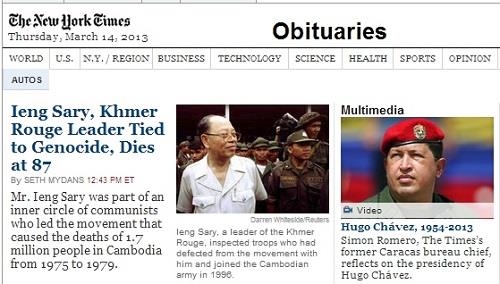
See also The Red Pill (March 6) and Classroom from Hell (March 7).
Comments Off on Talk Amongst Yourselves
For the new Jesuit pope (see previous post)
Now among Log24 posts tagged "Khora" is one
from July 15, 2010, dealing with a book called
Deconstruction in a Nutshell: A Conversation with
Jacques Derrida , edited and with a commentary by
John D. Caputo (Fordham University Press, 1997).
Related material:
"Khora is the felix culpa of a passion for the impossible,
the happy fault of a poetics of the possible, the heartless
heart of an ethical and religious eschatology.
Khora is the devil that justice demands we give his due."
— John D. Caputo, conclusion of "Abyssus Abyssum Invocat :
A Response to Kearney." Caputo's remarks followed
Richard Kearney's "Khora or God?," pp. 107-122 in
A Passion for the Impossible: John D. Caputo in Focus ,
edited by Mark Dooley, State University of New York Press,
Albany, 2003. See "Abyssus " on pp. 123-127.
See also other uses here of the phrase "In a Nutshell."
Comments Off on Nutshell continued
Wednesday, March 13, 2013
Comments Off on Verbum Sat
From a review in the April 2013 issue of
Notices of the American Mathematical Society—
"The author clearly is passionate about mathematics
as an art, as a creative process. In reading this book,
one can easily get the impression that mathematics
instruction should be more like an unfettered journey
into a jungle where an individual can make his or her
own way through that terrain."
From the book under review—
"Every morning you take your machete into the jungle
and explore and make observations, and every day
you fall more in love with the richness and splendor
of the place."
— Lockhart, Paul (2009-04-01). A Mathematician's Lament:
How School Cheats Us Out of Our Most Fascinating and
Imaginative Art Form (p. 92). Bellevue Literary Press.
Kindle Edition.
Related material: Blackboard Jungle in this journal.
See also Galois Space and Solomon's Mines.
Comments Off on Blackboard Jungle
… to apprehend
The point of intersection of the timeless
With time, is an occupation for the saint
— Four Quartets

Intersection sign,
courtesy of Donald Knuth
Related material:
The previous post and Fourfold in this journal.
Comments Off on Intersection
Tuesday, March 12, 2013
Thanks to University Diaries for her link today to an
excellent Forbes article on management guru Michael Porter.

Related searches (click images to enlarge)—


For some background, see Diamond model in Wikipedia.
The Stewart quoted in Forbes is Matthew Stewart, author of The Management Myth .
Comments Off on Michael Porter: The Great and Powerful
Sistine Chapel Smoke

Tromso Kunsthall Mirrors

Background for the smoke image:
A remark by Michelangelo in a 2007 post, High Concept.
Background for the mirrors image:
Note the publication date— Mar. 10, 2013.
See that date in this journal and related material.
Comments Off on Smoke and Mirrors
For the Garden of Good and Evil
(Click image for some backstory.)

On Cambridge, Massachusetts:
"By all means accept the invitation to hell,
should it come. It will not take you far—
from Cambridge to hell is only a step;
or at most a hop, skip, and jump.
But now you are evading— you are
dodging the issue… after all,
Cambridge is hell enough."
— Great Circle , a 1933 novel by Conrad Aiken
(father of Joan Aiken, who wrote The Shadow Guests )
Comments Off on Conclave
Monday, March 11, 2013
The late film director Micky Moore playing St. Mark as a child:

See also a clip introducing St. Mark from DeMille's 1927 "The King of Kings."

Moore reportedly died at 98 at his Malibu home on March 4th.
Comments Off on Ready When You Are, C. B.
Sunday, March 10, 2013
(Continued)
The 16-point affine Galois space:

Further properties of this space:
In Configurations and Squares, see the
discusssion of the Kummer 166 configuration.
Some closely related material:
Comments Off on Galois Space
The previous post described briefly a 2002
book on magic and religion, Golems of Gotham .
For a Sunday New York Times review, click here.
Comments Off on Sunday School
Friday, March 8, 2013
A brief drama inspired by Peter J. Cameron's post today
on a March 4-8 combinatorics conference at
Florida Atlantic University (FAU) in Boca Raton:
Scene 1


Scene 2

Scene 3

Scene 4

Recommended Reading
for Hogwarts Students
on Devil’s Night (2005):
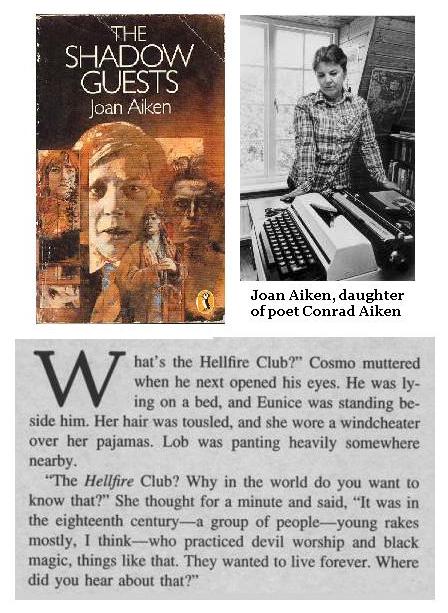
Click on the above for details.
Comments Off on Pinter Play
Thursday, March 7, 2013
Comments Off on Classroom from Hell
Today's previous post recalled a post
from ten years before yesterday's date.
The subject of that post was the
Galois tesseract.
Here is a post from ten years before
today's date.
The subject of that post is the Halmos
tombstone:
"The symbol  is used throughout the entire book
is used throughout the entire book
in place of such phrases as 'Q.E.D.' or 'This
completes the proof of the theorem' to signal
the end of a proof."
— Measure Theory (1950)
For exact proportions, click on the tombstone.
For some classic mathematics related
to the proportions, see September 2003.
Comments Off on Proof Symbol
Rock guitarist Alvin Lee, a founder of
the band Ten Years After , died
on March 6, 2013 (Michelangelo's
birthday). In his memory, a figure
from a post Ten Years Before —

Plato's reported motto for his Academy:
"Let no one ignorant of geometry enter."
For visual commentary by an artist ignorant
of geometry, see a work by Sol LeWitt.
For verbal commentary by an art critic ignorant
of geometry, see a review of LeWitt by
Robert Hughes—
"A Beauty Really Bare" (TIME, Feb. 6, 2001).
See also Ten Years Group and Four Gods.
Comments Off on Ten Years After
Wednesday, March 6, 2013
Comments Off on Final Club
On the late Hugo Chávez:
"A couple of years later, I asked him why,
so late in the day, he had decided to
adopt socialism. He acknowledged that he
had come to it late, long after most of
the world had abandoned it, but said that it
had clicked for him after he had read
Victor Hugo’s epic novel Les Misérables .
That, and listening to Fidel."
— The New Yorker 's Jon Lee Anderson
"As you can see, we've had our eye on you
for some time now, Mr. Anderson."

Comments Off on The Red Pill
Comments Off on Midnight in Pynchon*
Tuesday, March 5, 2013
(Continued)
"Now this is fairly serious stuff."
As is this.
Comments Off on But Seriously…
Monday, March 4, 2013
Continued from February 27, the day Joseph Frank died…
"Throughout the 1940s, he published essays
and criticism in literary journals, and one,
'Spatial Form in Modern Literature'—
a discussion of experimental treatments
of space and time by Eliot, Joyce, Proust,
Pound and others— published in
The Sewanee Review in 1945, propelled him
to prominence as a theoretician."
— Bruce Weber in this morning's print copy
of The New York Times (p. A15, NY edition)
That essay is reprinted in a 1991 collection
of Frank's work from Rutgers University Press:

See also Galois Space and Occupy Space in this journal.
Frank was best known as a biographer of Dostoevsky.
A very loosely related reference… in a recent Log24 post,
Freeman Dyson's praise of a book on the history of
mathematics and religion in Russia:
"The intellectual drama will attract readers
who are interested in mystical religion
and the foundations of mathematics.
The personal drama will attract readers
who are interested in a human tragedy
with characters who met their fates with
exceptional courage."
Frank is survived by, among others, his wife, a mathematician.
Comments Off on Occupy Galois Space
Saturday, March 2, 2013
(Continued)
"No puzzle has exercised more fascination
upon writers interested in the history of mathematics."
— Sir Thomas Little Heath, quoted by Mark Dominus in
his journal "The Universe of Discourse" on January 22, 2009.
If synchronicity is admitted to the universe of discourse,
a post in this journal on that same date may be of interest.
Comments Off on Discourse

Earlier…
Princeton Harvard Eating —

"But the tigers come at night,
With their voices soft as thunder."
— Les Miserables
Comments Off on Life of Pi
Friday, March 1, 2013
(Continued from Jan. 13 and Feb. 19.)
The founder of Graylock Press
died at 96 in Bethesda on Feb. 19:

For some background on the original Bethesda,
see a webpage on Angels in America.
For some background on noted Graylock authors,
see Pavel Alexandrov.
For deeper background, see a book praised by Freeman Dyson:
"The intellectual drama will attract readers
who are interested in mystical religion
and the foundations of mathematics.
The personal drama will attract readers
who are interested in a human tragedy
with characters who met their fates with
exceptional courage."
Comments Off on Spinning in Infinity
In memory of a 1961 graduate of
Beverly Hills High School who died today—
last night's Eiger post and a tall white mountain.
Comments Off on Graduate







